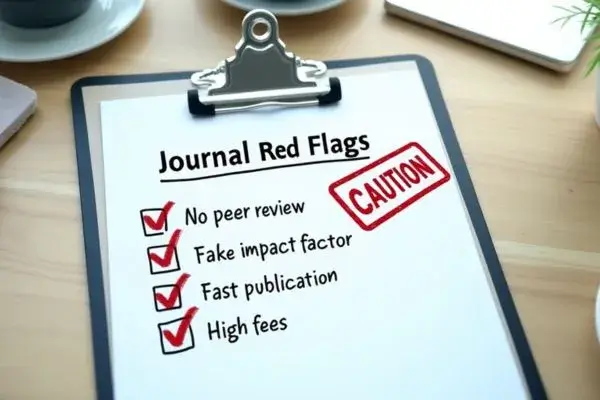Today’s pharmaceutical landscape demands more than a static calendar of abstracts and manuscripts. It calls for a dynamic, forward-looking pharmaceutical publication strategy that can flex with new data, regulatory feedback, and evolving business priorities.
That’s where the right MedComms partner comes in. Not just as an executor, but as a strategic ally. From identifying risks before they become roadblocks to ensuring alignment across functions and time zones, an experienced MedComms agency helps you co-create a plan that’s both ambitious and realistic. They bring expertise in publication planning for clinical trials, process rigour, and the ability to keep momentum going when pressure mounts.
In this article, we explore 10 key principles for building a bullet-proof publication plan. One that delivers clarity, confidence, and impact across every stage of your clinical programme.
1. Set Clear Objectives Early, Then Build Around Them
The strongest publication plans start with a sharp focus on the why. What do you need each publication to achieve: data transparency, market education, scientific credibility, or regulatory fulfilment? Taking the time to define scientific publication goals early, anchors your strategy and makes it easier to prioritise, sequence, and tailor content to the right audience and format.
This becomes especially important when planning publications in the context of a global product launch. Here’s what pharma teams need to know about strategic publication planning for global launches.
A good MedComms agency will help translate these high-level goals into a structured roadmap, ensuring every publication serves a purpose and contributes to overall publication strategy alignment. This ensures your efforts support the broader narrative of your brand.
2. Don’t Just Plan, Plan with Flexibility
A solid publication timeline doesn’t just map out dates; it anticipates where things might go off course. Interim or final data cuts are often delayed due to issues such as slow enrolment, extended follow-up, or data cleaning backlogs. Regulatory feedback can shift priorities. Review cycles stall when key stakeholders are unavailable. That’s why flexibility isn’t a nice-to-have; it’s essential.
A strategic MedComms partner will help you build an adaptive publication plan from the outset. This means setting realistic timelines with built-in buffers, defining clear escalation pathways, and creating workflows that can absorb the unexpected without derailing delivery. Flexibility is what turns a good plan into a resilient one.
3. Align Your Stakeholders Early and Often

Strong publication plans rely on cross-functional publication planning from the start. Medical, Regulatory, Commercial, and Legal teams all have a stake, and often differing priorities. Without coordination, timelines slip and messaging fragments.
A strategic MedComms agency can act as a translator between functions, ensuring scientific accuracy, regulatory compliance, and strategic consistency across teams. Proactive planning meetings and regular check-ins help identify potential conflicts early, keep everyone informed, and maintain momentum. Alignment isn’t a one-off; it’s a continuous process that keeps your plan on track.
4. Use Your MedComms Partner to Anticipate Risks Others Miss
Things go wrong, but often in predictable ways. Experienced MedComms partners have seen it all: reviewer bottlenecks, unrealistic timelines, misaligned author expectations, and poor journal targeting. The value lies in identifying publication risks before they derail progress.
By drawing on this experience, agencies can flag common pitfalls early and build practical mitigations into your plan. That might mean pressure-testing publication timelines, clarifying roles, or reevaluating journal choices before submission to ensure it aligns with current best practices. Proactive risk management doesn’t just prevent delays in medical publication; it builds confidence across the team.
5. Know the Red Flags: Common Pitfalls in Publication Planning
Even the best-laid plans can falter if common risks are overlooked. Here are some frequent pitfalls and how to avoid them:
• Focusing only on primary outputs. Too often, teams build plans around top-line data but neglect valuable secondary stories such as subgroup analyses, patient-reported outcomes, or real-world evidence.
Tip: Create a comprehensive publication grid that includes both primary and secondary outputs from the start.
• No backup if KOL input is delayed. If a key author or KOL availability becomes an issue, timelines can stall. This is especially risky when input is needed for strategic decisions or high-profile medical publications.
Tip: Identify alternative reviewers or contributors early and establish contingency plans.
• Unclear governance slowing down approvals. Confusion over who reviews what and when can delay drafts, introduce inconsistent feedback, and contribute to regulatory holdups.
Tip: Define your review and sign-off process at the beginning, including roles, responsibilities, and escalation pathways.
• Chasing timelines instead of strategy. A rush to meet congress deadlines or journal slots can lead to fragmented messaging or low-priority outputs.
Tip: Tie every publication to a clear objective and prioritise based on scientific and business value.
• Delaying journal selection until submission. Waiting until the end to decide on a journal often leads to journal fit issues, increased rejection risk, and wasted time.Understanding where evidence gaps exist, and how to fill them, is a critical part of this strategy. Explore the role of gap analysis in shaping effective evidence dissemination plans. Shortlist potential journals early, aligned with your data, audience, and goals as part of a strategic publication plan.
By spotting these red flags early and taking simple steps to avoid them, you can keep your publication plan focused, efficient, and resilient.
6. Get Governance Right from the Start

Clear governance is the backbone of an efficient publication plan. Without it, reviews drag on, roles blur, and disagreements stall progress. That’s why it’s essential to define a medical publication governance structure early; ideally, before the first draft is written.
Who signs off? How many review rounds are allowed? What’s the process when reviewers disagree? These aren’t just admin details; they directly impact timelines, publication quality, and team dynamics.
A MedComms agency can help shape a governance structure that works. From mapping out review stages to facilitating consensus from conflicting feedback, agencies bring the process discipline needed to keep things moving. They act as neutral organisers, ensuring everyone understands their role and helping enforce boundaries when scope creep threatens progress.
7. Use the Right Tools to Track Progress (And Bottlenecks)
Publication planning for medical communications isn’t just about strategy; it’s also about execution. That means having the right publication project management tools in place to track progress, flag delays, and keep everyone aligned. Spreadsheets alone won’t cut it.
Modern publication planning benefits from shared dashboards, Gantt charts, and collaborative platforms that provide real-time visibility across the portfolio. These publication project management tools help identify bottlenecks early, whether it’s a stalled review, missing data, or a resource gap, so issues can be addressed before timelines slip.
A good MedComms partner brings this infrastructure with them. They don’t just manage documents; they manage the process, giving clients transparency, control, and confidence that everything is on track.
8. Think Beyond the Next Deadline: Strengthen Your Long-Term Publication Process
A strong publication plan doesn’t just focus on the next abstract deadline; it supports the full arc of your clinical programme. From first-in-human data to post-launch education, each publication should contribute to a cohesive, strategic narrative shaped by long-term publication planning.
This includes aligning your medical writing activities across the full evidence lifecycle, from clinical study reports to plain language summaries. Read more about end-to-end medical writing planning.
A strategic MedComms partner helps you step back and see the bigger picture. They can identify key scientific storylines, ensure continuity across study phases and indications, and guide how early data sets the foundation for future messages. This kind of clinical publication roadmap also lays the groundwork for post-launch activities, including educational materials, review articles, and ongoing trials.
Keeping the long game in view ensures your publication efforts are not just timely but also timeless in their strategic value.
9. Treat Your Plan as a Living Document
A publication plan isn’t set in stone. It should evolve with your data, priorities, and the external landscape. What’s planned in January may look very different by August, especially in dynamic therapeutic areas or fast-moving markets. That’s the essence of a flexible publication strategy.
Regular review cycles are essential. Quarterly strategy updates help teams reassess timelines, realign priorities, and adapt to changes such as delayed readouts, shifting regulatory feedback, or new competitor activity. This kind of adaptive publication planning ensures your strategy remains aligned with real-world developments.
While strategic shifts often come from the client side, MedComms agencies play a crucial role in keeping the plan operational. They monitor publication timelines, flag risks like unresponsive authors or internal bottlenecks, and keep the publication status current. Ongoing communication ensures the plan stays relevant, realistic, and ready to deliver.
10. Choose a MedComms Partner Who’s a Strategist, Not Just a Supplier

A successful publication plan isn’t just about getting the work done; it’s about making the right strategic choices along the way. That’s where the right strategic medical communications partner makes all the difference.
You don’t want a team that simply takes orders and delivers drafts. You want a partner who co-leads the process: bringing deep publication expertise, insight into KOL engagement, journal submission strategy, and the rigour needed to keep things moving. An expert medical writing agency helps shape the plan, not just implement it, offering proactive guidance, flagging risks, and keeping the scientific narrative consistent and impactful.
If you're considering external support, it’s worth understanding how to make the most of outsourced expertise. Here’s a comprehensive guide to outsourcing medical writing.
In short, choose a MedComms team that thinks like a strategist, acts like a partner, and delivers like a pro.
Want a strategic publications plan that gets your data seen by the right people?
See talk about how we could help, as your dependable expert publications partner.
[Let’s talk now] [Find out more about publications]



.webp)




